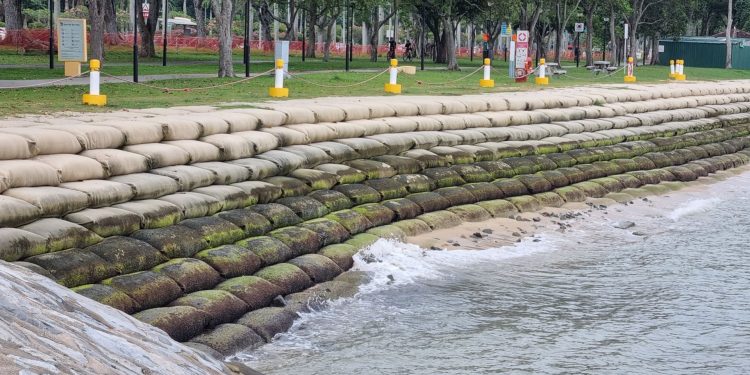There is no more sandy beach at the East Coast.
Instead, sandbags a storey high lined what was the beach between Bedok Jetty and East Coast Lagoon as joggers ran by the strip on April 2.
Two more areas, seen on Google satellite map, also had sandbags lining the beaches and breakwater barriers built.
Can it be that the coastal areas in the east have eroded?
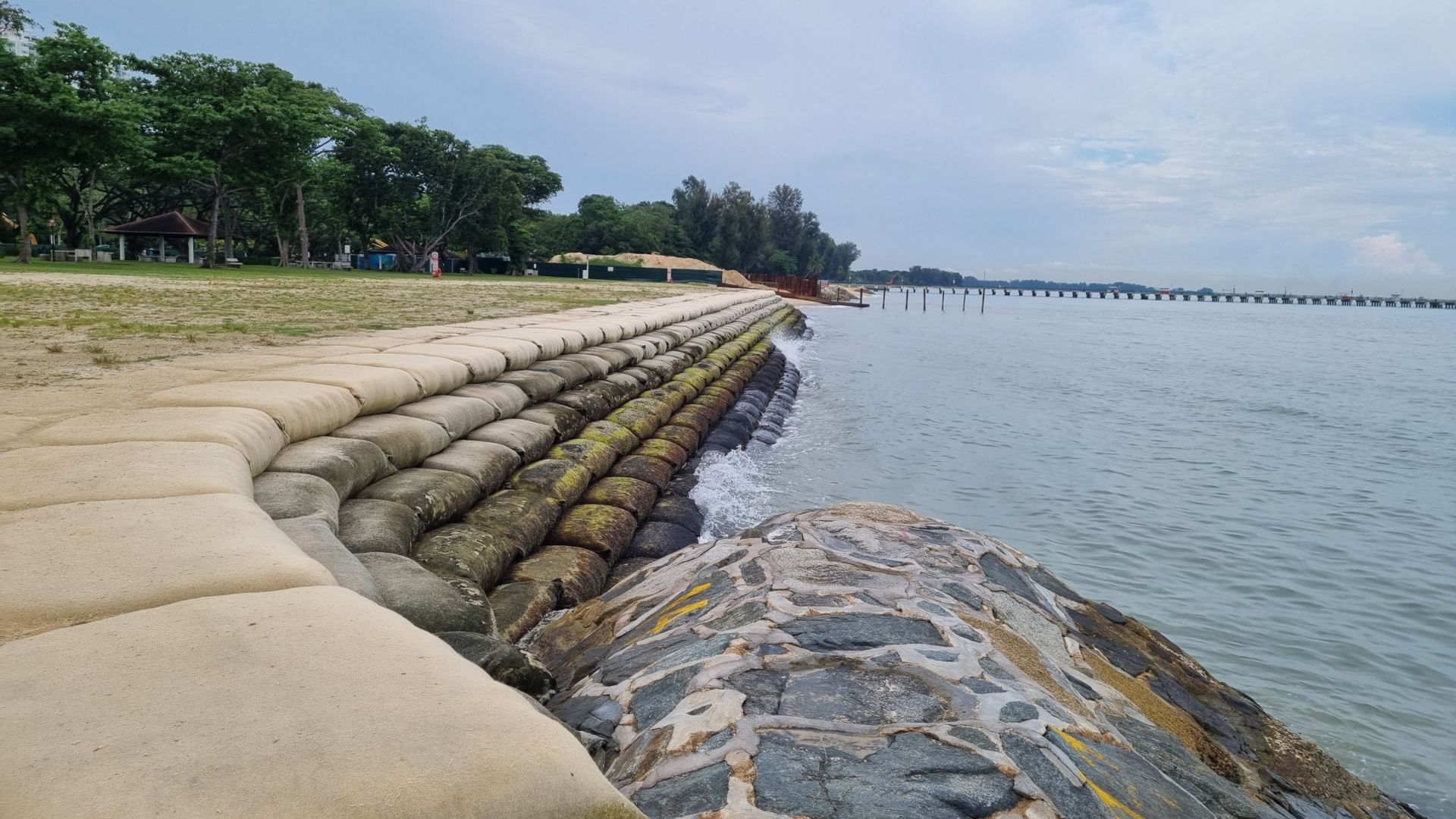
The great east coast reclamation
The first major post-Independence reclamation project was the East Coast Reclamation. Dubbed the Great Reclamation, the project was undertaken by the Housing and Development Board (HDB), one of three government agencies appointed to carry out land reclamation, and it added a 1,525-hectare tract along the southeastern coast of Singapore.
But before any work began, a pilot project was carried out by HDB in 1963 to reclaim 48 acres in the Bedok area and work on the East Coast Reclamation site began officially in 1966 and continued for the next 30 years over seven phases. The total cost of the East Coast project was $613 million and the entire operation was carried out around the clock, with headlands constructed at regular intervals off the reclaimed coast to protect the newly formed shoreline.
The reclaimed lands were used largely for commercial and residential purposes. In the east coast, housing estates such as Marine Parade and Katong sprang up, providing accommodation for an estimated 100,000 residents. To link the housing estates as well as the commercial centres in Siglap, Joo Chiat and Bedok to the city, the East Coast Parkway was constructed along the newly reclaimed coast. Parallel to the expressway, a linear park was built to provide recreational space for residents.
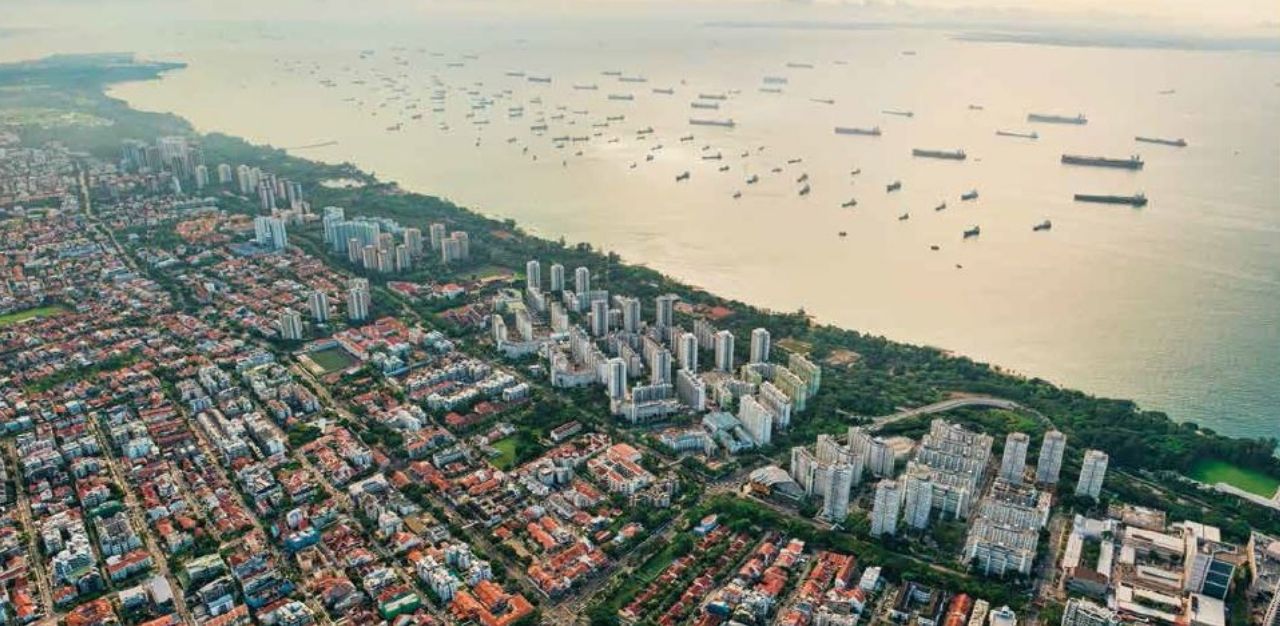
Today, East Coast Park comprises 185 hectares of parkland and a scenic 15-km beach. The other end of the reclaimed land around Marina Bay was to provide space for the expansion of the city centre. Today, the Marina Bay area has become the new downtown with a stunning waterfront setting and a mix of office and commercial developments, a mega hotel and casino resort, high-rise luxury apartments, and gardens and parkland.
The Maritime and Port Authority of Singapore (MPA), formerly Port of Singapore Authority (PSA), reclamation works for Changi Airport began in 1975 when it supervised the reclamation of 745 hectares of land along Changi coast for the construction of the airport. The adjoining seabed provided the fill material. In 1990, another massive reclamation was carried out for the expansion of the airport as well as for mixed-use developments in the area.
The plans were updated in 1998 to reclaim over 2,000 hectares of land at Changi East, of which about 820 hectares were allocated for the development of a fourth terminal and a third runway, while 125 hectares and 639 hectares were reserved for the Changi Naval Base and industries respectively. The reclamation was carried over five phases from 1992 to 2004.
Homes near East Coast Park are most coveted but for how long?
In Singapore, the most coveted homes are those with a seafront view, within walking distance of the beach and the park, and near eateries. The 185 hectare East Coast Park, with its 15km picturesque coastline stretching from Changi to Marina Bay, is a popular destination where people can jog, cycle, roller blade, and cable-ski and should they prefer, kite flying to more leisurely activities such as fish, barbecue, or even camp.
Housewife Mary Tan, 48, says she moved into Mandarin Gardens a year after it was completed in 1986. She was only 13 and having grown up with a flat facing the sea, it is no wonder she moved into an apartment in the block next to her parents after getting married. Now a mother of three, Mrs Tan believes she will be living there until she is old, “since I love the sea and having it within walking distance from my home”.
Like Mrs Tan, the Mohans have been living near the East Coast since they were children and have recently moved into an apartment at Seaside Residences “just to be near the sea”. “But looking at the sandbags and seeing how the stretch of beach has become narrower have made us worry if our homes here are safe. What if they get washed into the sea?” retired businessman Thomas Mohan, 79, says.
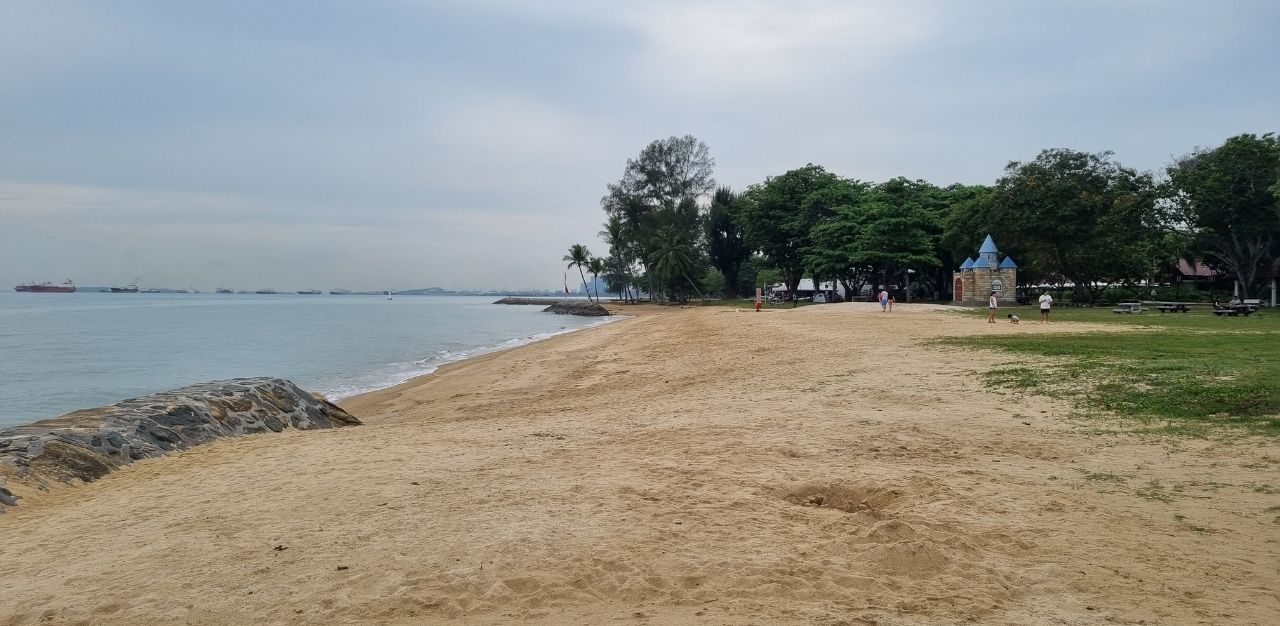
Both the Tans and the Mohans are worried when they learn that the fine sand of East Coast beach is disappearing and that sandbags are used to prevent further erosion.
This issue was brought up as early as 2006 when Ms Tay Yean Ching wrote to the Straits Times Forum to express her concerns about the “fast-disappearing Changi beach”. “The beach that used to be covered with fine sand is gone. It has been eroded by the recent torrential rain and the strong currents. Nothing much is left of the beach, except for protruding roots of trees near the water’s edge, and garbage. A palm tree lies on its side along the receding coastline,” she wrote.
According to researchers at the European Commission’s Joint Research Centre, climate change and sea level rise in recent years are currently on track to wipe out half the world’s sandy beaches by 2100, and Singapore is not an exception.
Its lead author Michalis Vousdoukas told AFP, “Apart from tourism, sandy beaches often act as the first line of defence from coastal storms and flooding, and without them impacts of extreme weather events will probably be higher.”
Countries, such as the United States, are already planning extensive defence systems, but in most nations such massive engineering schemes will be unfeasible, unaffordable or both. According to the findings, Australia could be hit hardest, with nearly 15,000 kilometres of white-beach coastline washed away over the next 80 years, followed by Canada, Chile and the United States. The 10 countries that stand to lose the most sandy shoreline also include Mexico, China, Russia, Argentina, India and Brazil.
Water agency PUB taking the lead as Coastal Protection Agency; embarked on studies for long-term strategies
In March 2020, then Minister for the Environment and Water Resources Masagos Zulkifli told Parliament that national water agency PUB would be embarking on coastal protection studies to develop long-term strategies and engineering designs for protecting the most vulnerable segments of Singapore’s coast, including Jurong Island and low-lying parts of the coast between the east and the city. The plans will be done in phases, starting with both these areas.
Mr Masagos told the House that expanding PUB’s role to the new national Coastal Protection Agency will allow the agency to tackle inland and coastal flooding holistically, he said, adding that with this new responsibility, PUB will study both coastal and inland flooding holistically and develop models to guide our flood protection response.
TheHomeGround Asia contacted PUB on preliminary findings of its studies that was announced two years ago. PUB did not reply by the time this article was published.
How much Singapore has grown since colonial times
In the past two centuries, Singapore’s land area has expanded by 25 per cent – from 58,150 to 71,910 hectares (or 578 to 719 sq km). This gradual increase in land surface is the result of a man-made engineering feat known as land reclamation.
While many people think land reclamation in Singapore is fairly recent, in actual fact, the earliest reclamation project took place in colonial times – in 1822 at the south bank of the Singapore River. Initially, Raffles had eyed the Esplanade-Rochor River beach front, north of Singapore River, as the commercial district, but the area was unsuitable for shipping activities due to shallow waters.
“Unless something gets done to protect our beaches and reclaimed land, my childhood home, also my dream home, will become my children’s and grandchildren’s nightmare.”
— RETIRED BUSINESSMAN THOMAS MOHAN, 79
The south bank, on the other hand, occupied a low lying marsh that was prone to flooding. A hillock near where Battery Road is located today was levelled to provide earth to fill the wetlands and about 300 coolies were hired to build the embankment along the river’s edge to prevent the water from overflowing into the land. The process took about four months and gave rise to a crescent-shaped area known today as Boat Quay.
By the late 1860s a second strip of reclaimed land, stretching from Johnston’s Pier to the old Telok Ayer Market was built and named Collyer Quay. It was further expanded when the Telok Ayer Reclamation Scheme was commissioned and carried out between 1879 and 1897. The aim was to create new land so that thoroughfares, including Cecil Street, Robinson Road and Raffles Quay, could be built to link the commercial district and the new port at Tanjong Pagar via Telok Ayer.
A patchwork protection for Singapore’s coastlines
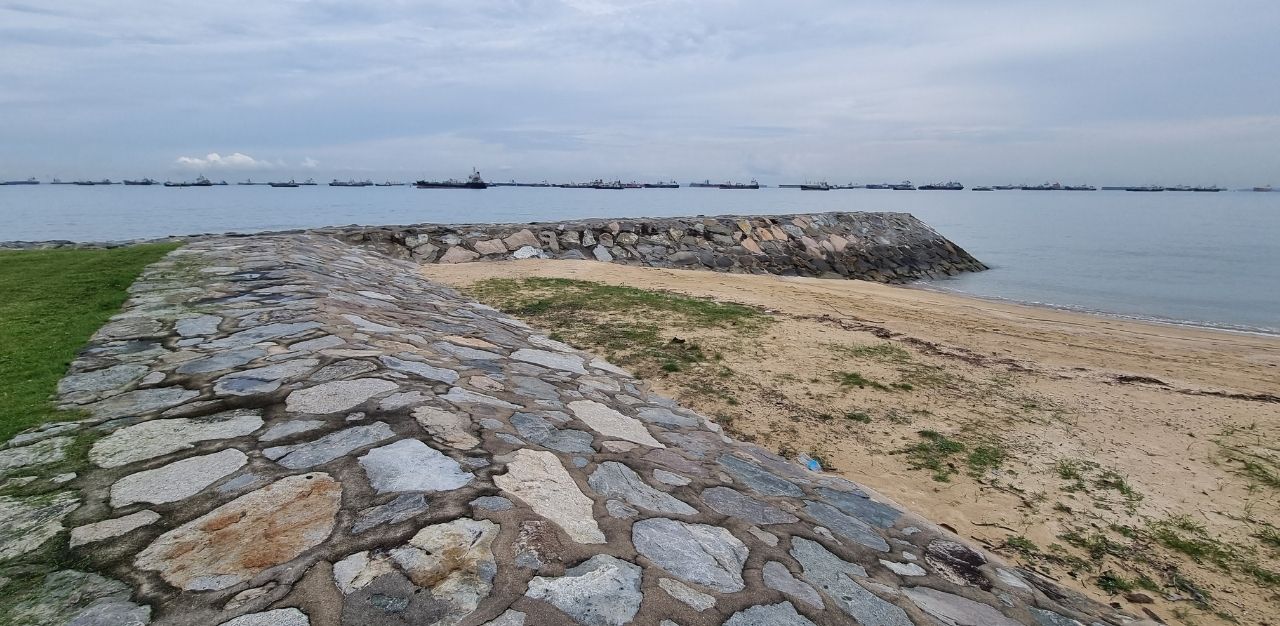
About 70 per cent of Singapore’s coastline is currently protected by hard structures, and these include concrete seawalls and stone revetment walls, as well as hard infrastructure like the Marina Barrage and dams such as the ones in Kranji and Yishun, director of the coastal protection department at national water agency PUB Hazel Khoo said at a 2021 webinar organised by Singapore daily The Straits Times.
But coastal engineering expert who has advised the Singapore Government on adaptation strategies Robert Nicholls said there is “no one-size-fits-all approach” to protecting the country’s coastlines from rising sea levels.
“Different coastlines lead to different responses of the coast to sea-level rise and also different consequences if disaster unfolded,” Prof Nicholls, who is director of the Tyndall Centre for Climate Change Research at Britain’s University of East Anglia, said.
“So when we assess a coastline we examine the hazard, exposure and vulnerability and how these might change to understand the scale of the problems and identify the range of potential solutions,” he added.
But the impact of rising sea levels will not only damage coastlines and erode beaches, it also result in flash floods and erratic rainfall.
“I read somewhere that mid-level projections expect sea level to rise at least 19 inches (48 cm) by 2050. If that is the case, unless something gets done to protect our beaches and reclaimed land, my childhood home, also my dream home, will become my children’s and grandchildren’s nightmare,” Mr Mohan says.
Join the conversations on THG’s Facebook and Instagram, and get the latest updates via Telegram.



